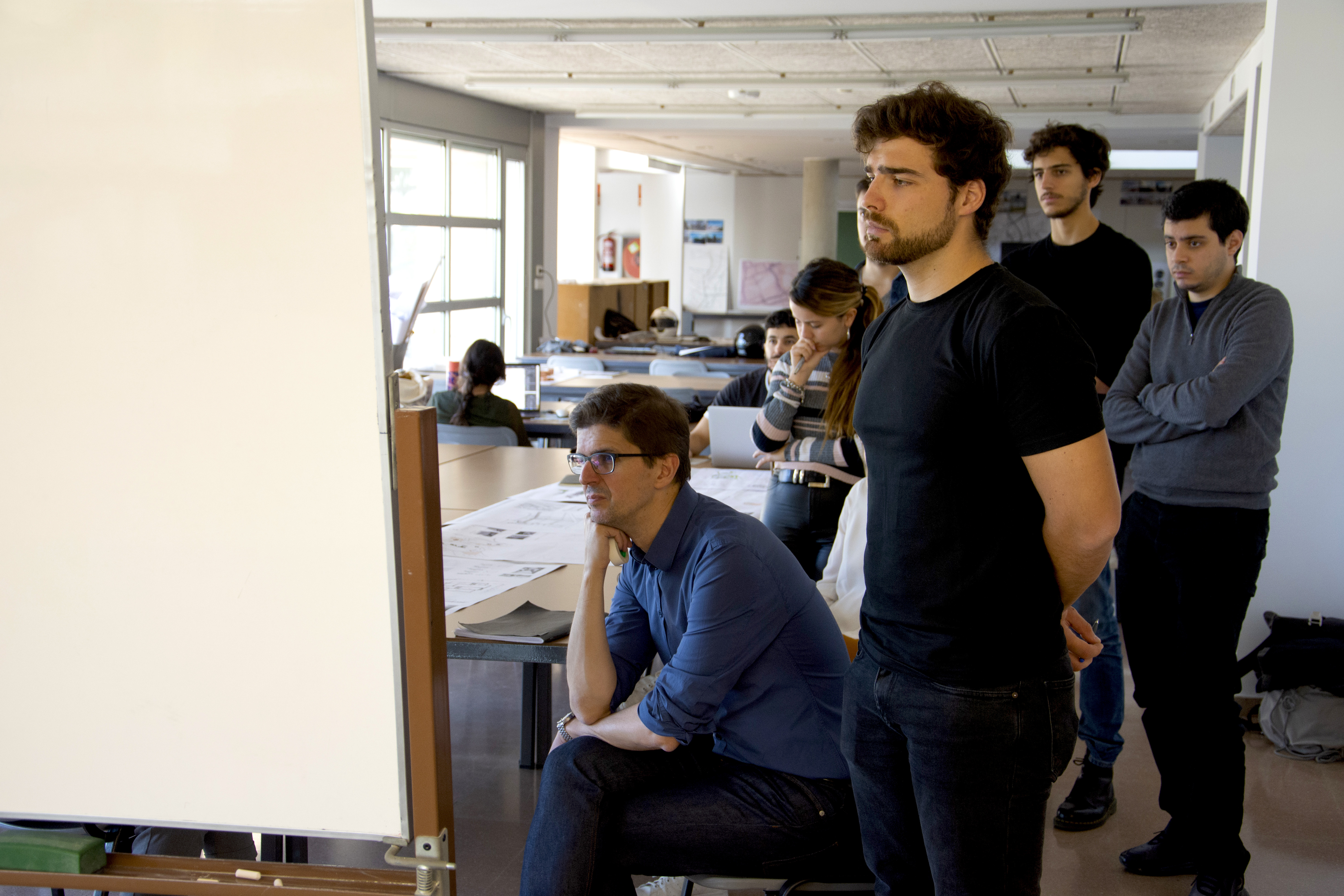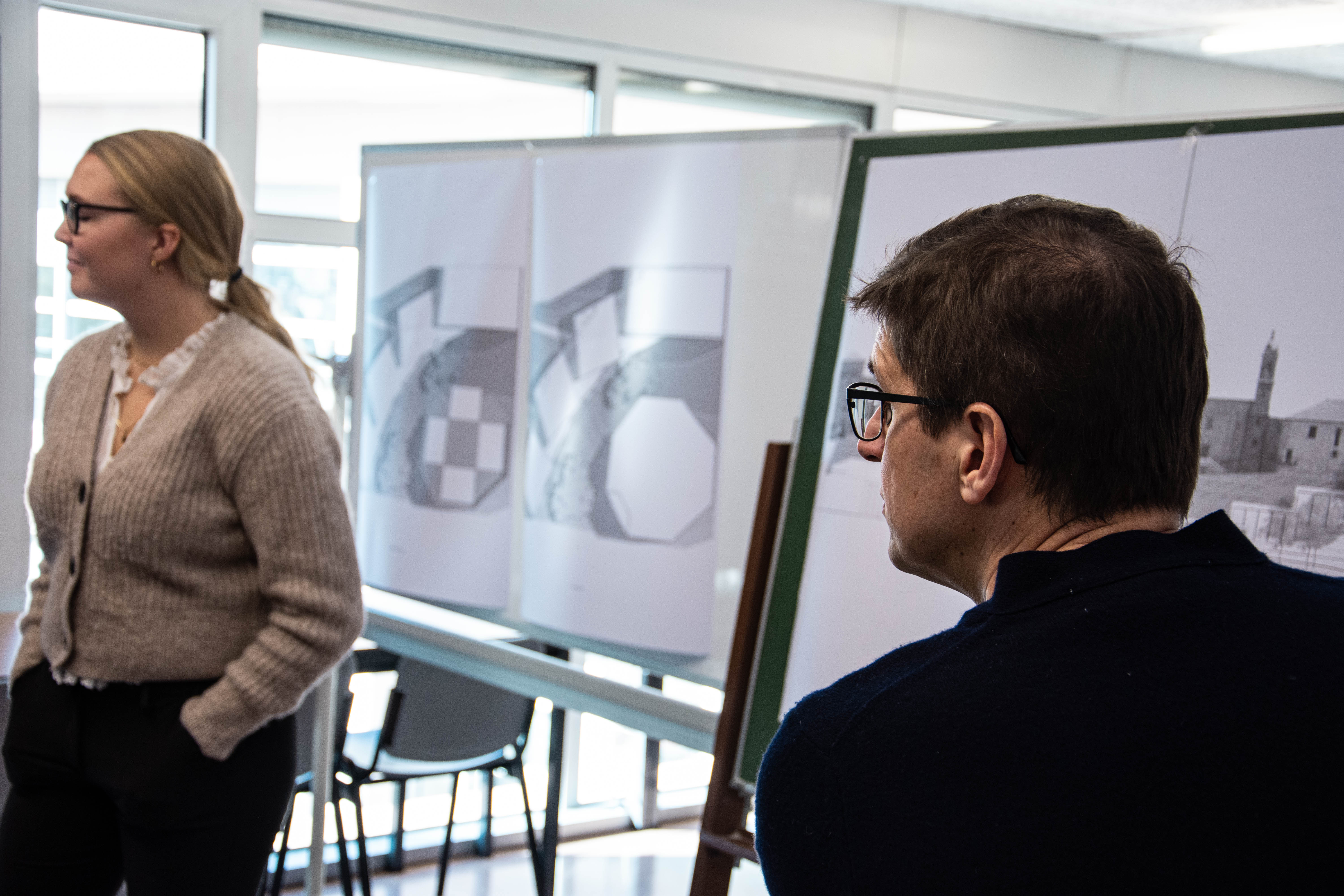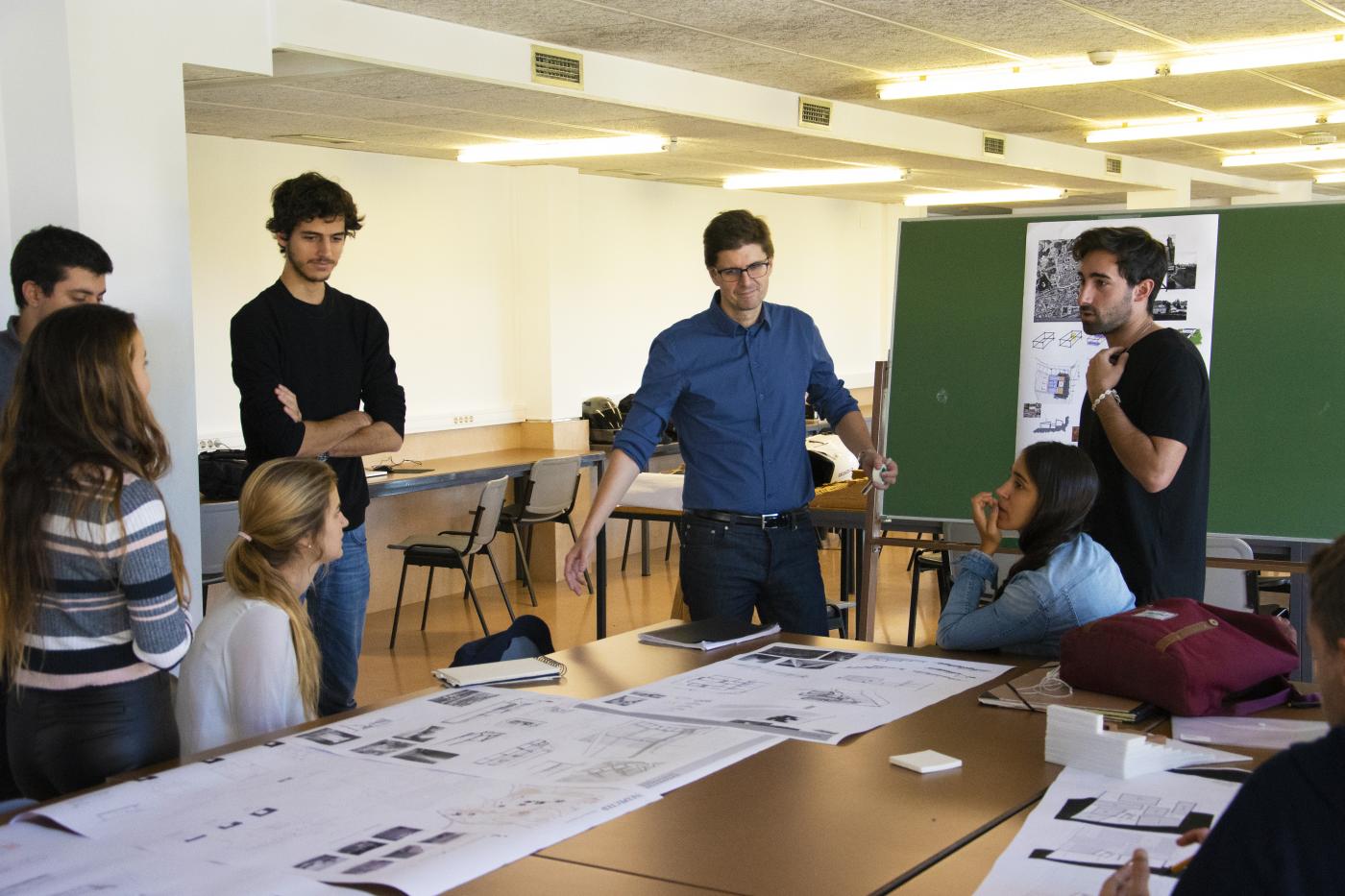Alberto Veiga, from Galicia, Spain, and Fabrizio Barozzi, Italian, together form Barozzi Veiga, an architectural studio based in Barcelona that rose to fame in 2015 when it won the Mies van der Rohe Award, the European Union Award for Best Contemporary Architecture, one of the most relevant honours in the field. Their serenely expressive works are to be found all over the world, and are an example of how to integrate projects into the context of their location. Over the course of the first semester of the 2019-2020 academic year, Barozzi Veiga have held positions as visiting professors at La Salle-URL as part of the Visiting Unit. This new unit marks a change in the structure of La Salle-URL School of Architecture (ETSALS) that aims to add a more international, bespoke touch to its teaching method. Alberto Veiga’s time as a visiting professor at La Salle ended in January when he gave the CulturTalks, which closed the first cycle of conferences of the year and he joined the other partner from his firm in reviewing the projects put together by students.
- After having taught short courses, workshops and conferences, this was your first full-on teaching experience as a professor. What did you make of it?
It’s true, up until now I was used to heading up workshops, or courses lasting one or two weeks. Coming from that, I believe that the experience as a teacher at La Salle-URL has been a successful one. Being at the University and being able to confront your ideas with those of your students has been amazing; it’s been a great experience on a personal level.
- What attracted you to teaching this Visiting Unit at La Salle-URL?
What I liked about La Salle-URL’s proposal was the opportunity to approach it the way I wanted, the freedom to decide how to develop the course over the semester, to have a kind of blank canvas I could fill. I enjoyed the chance to explain to the students the way I see architecture at the moment. Having the freedom to teach the unit has been fantastic for me.
“It’s not often you see such a close relationship between teacher and student, and that's something La Salle-URL really pursues”

- What would you highlight about ETSALS as a school of architecture?
It’s a way of explaining the way we understand architecture, which is what I've been trying to do throughout the semester. Not because my understanding of the discipline is better than anyone else’s, but to help students think about the way they want to understand architecture, both now and in the future. I wanted the students to think of themselves as architects and show them that nothing makes any sense without that personal reflection.
What makes La Salle-URL and ETSALS special is that it offers a microcosm in which to work, where students can develop in a very positive way. It’s not often you see such a close relationship between teacher and student, and that's something La Salle-URL really pursues: for students to be in close contact with the teacher and vice versa. By the end of the semester, you have a very close link, and you don’t see that in other architecture schools.
You usually define the architectural style of Barozzi Veiga as “monumental sentimentality”. Did you use this as a theme in your unit?
“Teaching is a process that forces you to refine your thinking”
- Is the most difficult part of being a teacher knowing how to get through to students?
Yes, that’s one of the main challenges. It’s really different from communicating in an office environment where everyone knows and understands you without having to put it into words. With students, it’s different, they don’t know anything about you and that forces you to work hard to explain what you consider important, what’s really substantial about the discipline and why that might be important to the students. In that sense, teaching is interesting because it’s a process that forces you to distil your way of thinking, and at the same time forces you to explain it in a way that is understandable to everyone. And that’s a challenge, because you realise that many of the things you have in your mind are just superficial ideas.

- Neither you nor Fabrizio Barozzi are from Barcelona. But you decided to locate your studio and your work here. Have you used the city in teaching your unit?
I told them to be patient and optimistic. I told them the world is a big place and sometimes you just happen to be in the wrong place. I told them there are jobs for everyone, you just need to know how to find the right place. I also told them that even if they're not going to be involved in architecture in the future, their way of thinking will always be that of an architect, and that they should try to use that to their advantage in whatever they pursue.
We live in Barcelona and so we’re part of the context here. We architects imagine things, and in those things and projects you can always see elements that relate to the place where you live, because it’s part of your background. In a way, I’m different because I live in Barcelona; and that's something that will also happen to the students, who will be very influenced by Barcelona, which is a fantastic background that can really have a powerful effect.
- What advice and recommendations have you given to students?
I told them to be patient and optimistic. I told them the world is a big place and sometimes you just happen to be in the wrong place. I told them there are jobs for everyone, you just need to know how to find the right place. I also told them that even if they're not going to be involved in architecture in the future, their way of thinking will always be that of an architect, and that they should try to use that to their advantage in whatever they pursue.
